Blocking out a shot: OTS of dancer as the 2 detectives approach and introduce themselves.
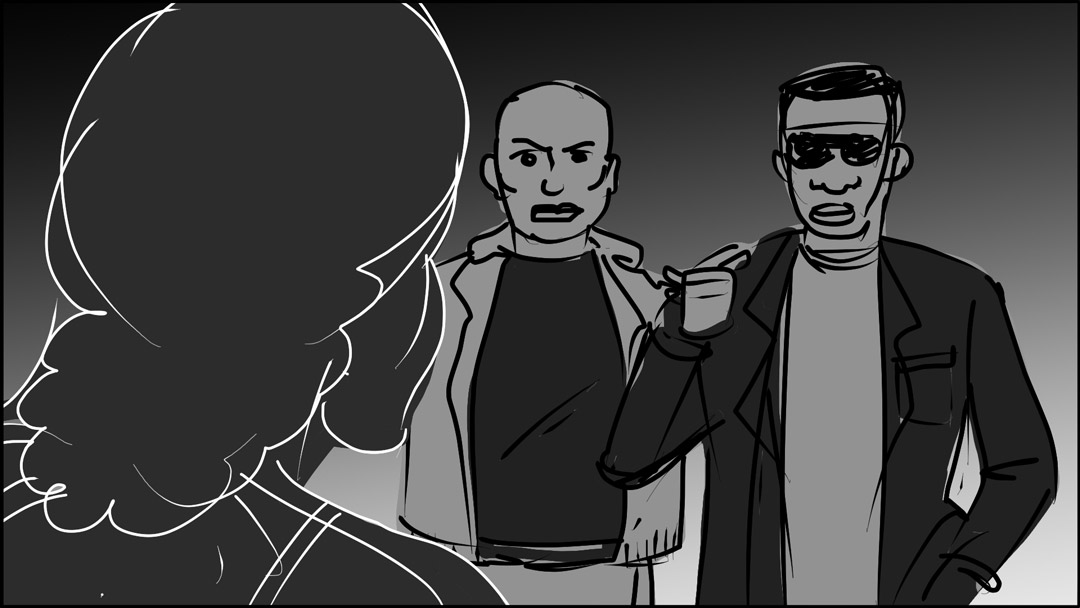
Blocking out a shot: OTS of dancer as the 2 detectives approach and introduce themselves.


Here’s an expanded version of a 6-foot commissioned wall mural I did recently. The complete scene is now extended at both ends to create mural suitable for a longer wall such as in a restaurant or a public space. Designed for a size of 53 feet long by 10 feet high, it can be used as is for any space with similar 5.3:1 ratio, or I can customize it to work with any size.
Just to have some more fun with it, and for a more immersive experience, I made the short video below to include restaurant noise and the familiar and beloved Saigon street sounds of traffic, mopeds and honking.
See more in the Saigon Pho Restaurant mural portfolio.
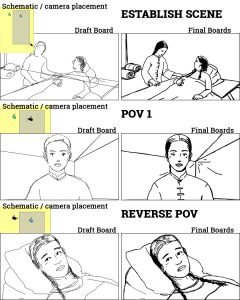 Storyboarding process: Scene schematic with camera placement, scene design and blocking.
Storyboarding process: Scene schematic with camera placement, scene design and blocking.
Here’s a series of 3 boards developed to show a scene inside a tent with 2 characters. Each board consists of a schematic (yellow area), a rough draft of visualization, and the final board. Each schematic specifies clearly where the camera is mounted and where the action and scene is taking place.
The first board is an establishing shot at medium distance as called for by the schematic.
The second shot is a POV of the reclining character looking at the character sitting by the bunk bed.
The third shot is the reverse: a POV of the character sitting looking at the reclining character.
Here’s a short animation of a sequence I storyboarded for Hunger Pains.
Mama reaches out toward Sam from Sam’s POV. This is part of a late sequence changes the end to revise the story’s ending. The storyboard was obviously static, but I wanted to revisit it and add some drama with movement and flashes of lightning.
Here’s a quick demonstration of a short scene development for storyboarding.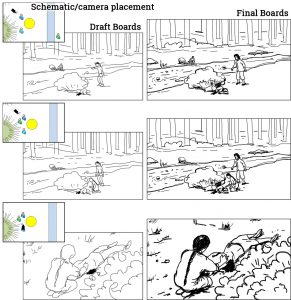
First board: Start on wide shot with Xiang finding Kulya injured in the foreground, behind a bush. Xiang calls out to Liling washing clothes across the stream.
Second board: Maintain shot as Liling crosses the stream and kneels down by Kulya on the ground.
Third board: POV of Xiang looking down at Liling tending to Kulya.
 Storyboarding process through story development; collaboration between the writer, director, and storyboard artist; and technical and artistic skills.
Storyboarding process through story development; collaboration between the writer, director, and storyboard artist; and technical and artistic skills.
The process varies from project to project, depending on client’s workflow and budget.
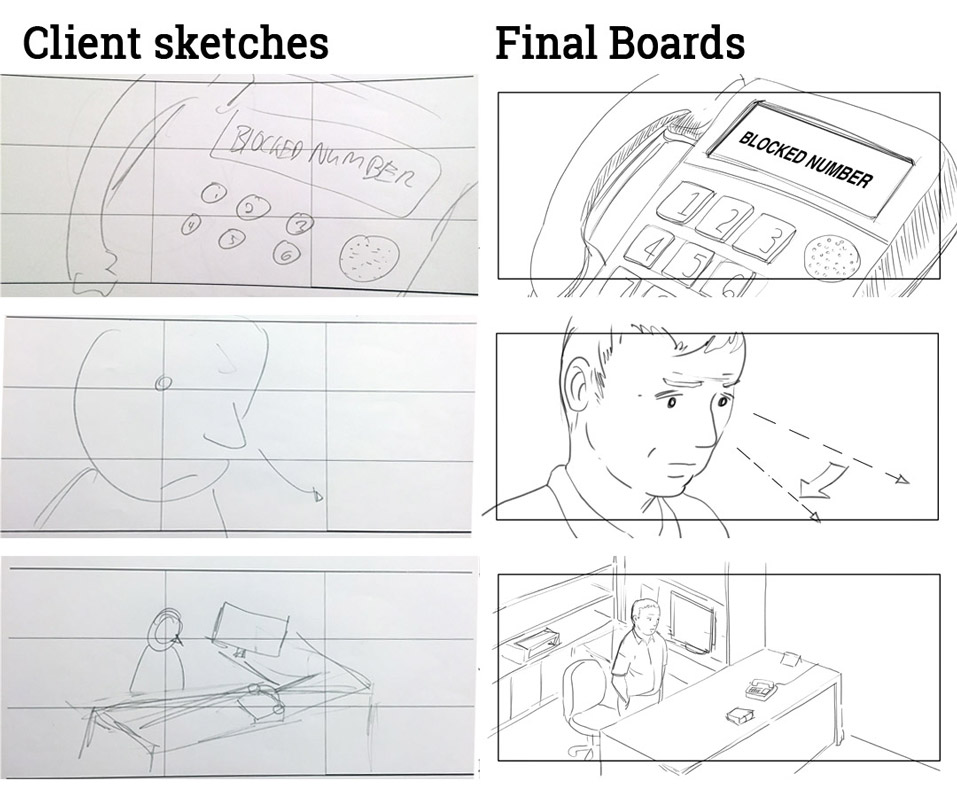 Storyboarding with the rule of thirds and client’s initial sketches versus final storyboards.
Storyboarding with the rule of thirds and client’s initial sketches versus final storyboards.
Rule of thirds:
Sketches versus final boards comparison. Final boards are drawn to
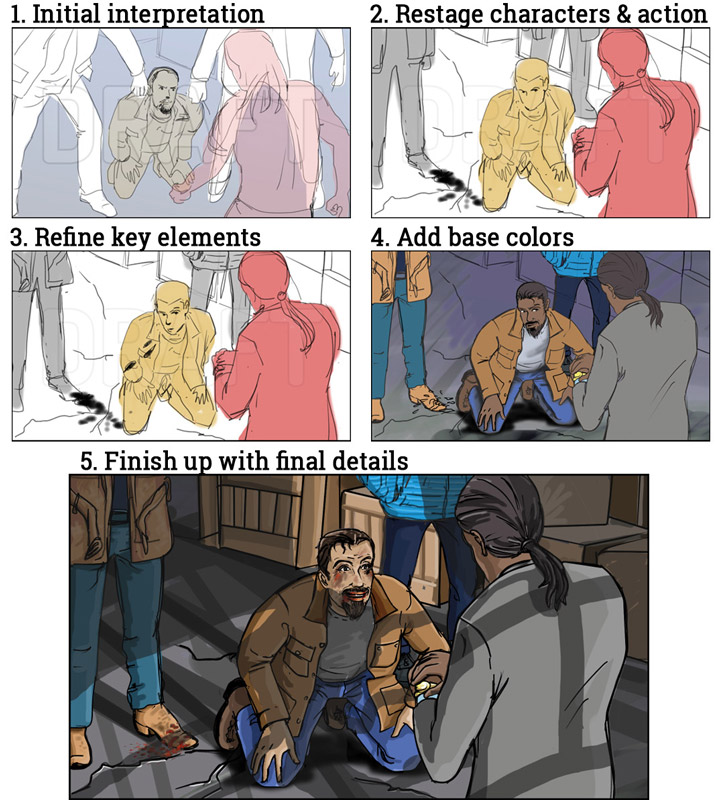 Storyboarding process through story development, collaboration, and technical and artistic skills.
Storyboarding process through story development, collaboration, and technical and artistic skills.
The process varies from project to project, depending on client’s workflow and budget.
Here’s a short animation of a sequence I storyboarded for Hunger Pains.
INT. SAM’S BEDROOM – LATE NIGHT. Lit by a single table light, Sam sits and draws a picture.

